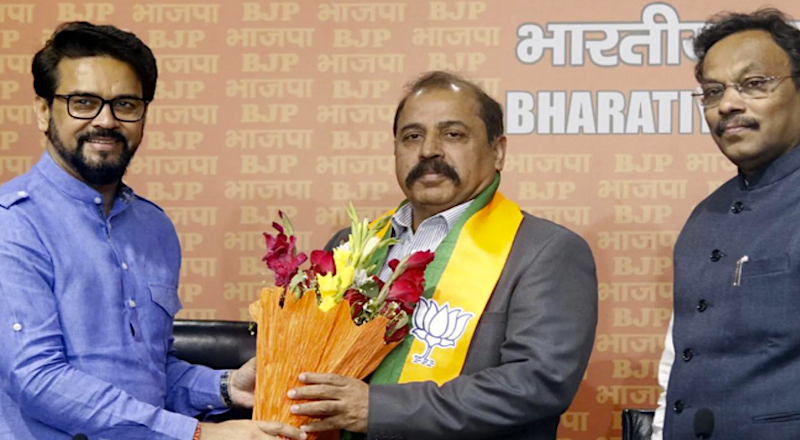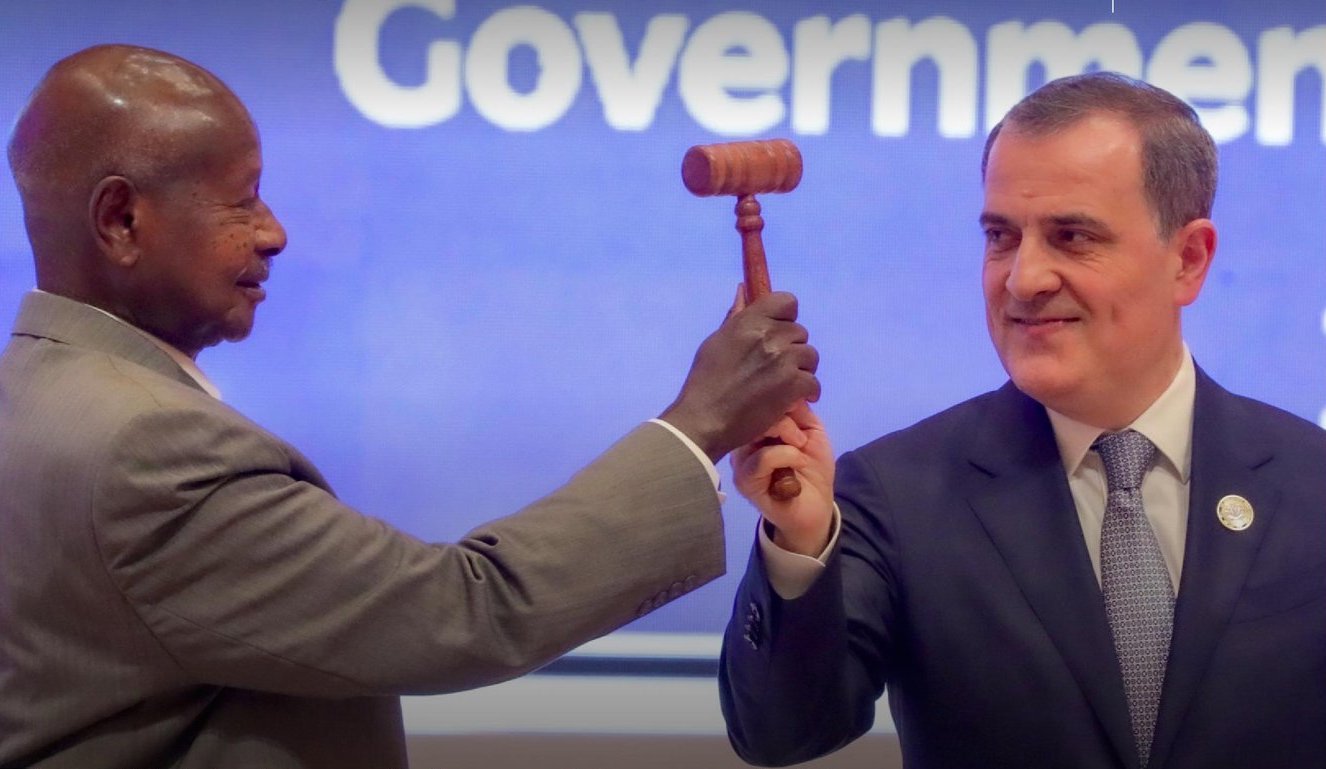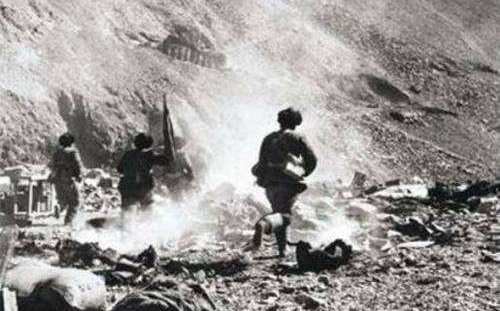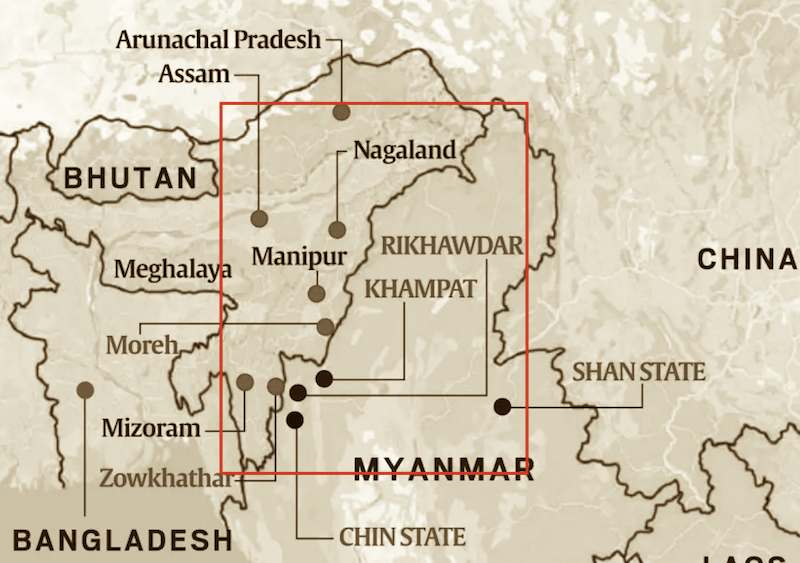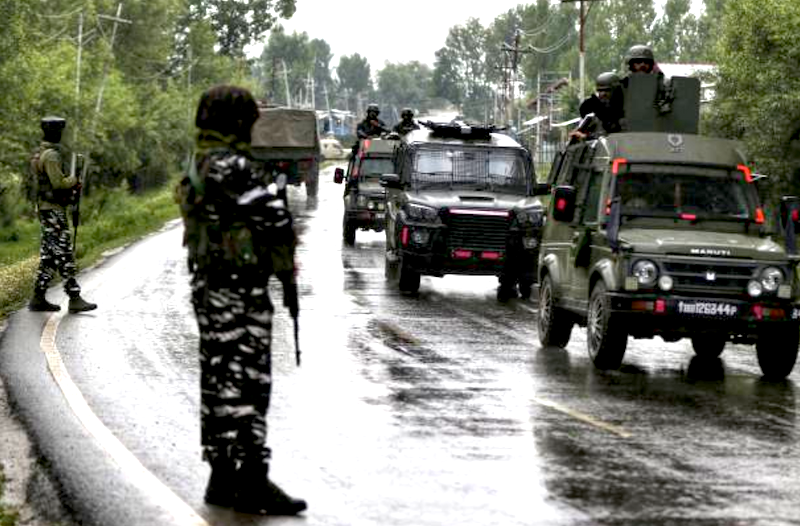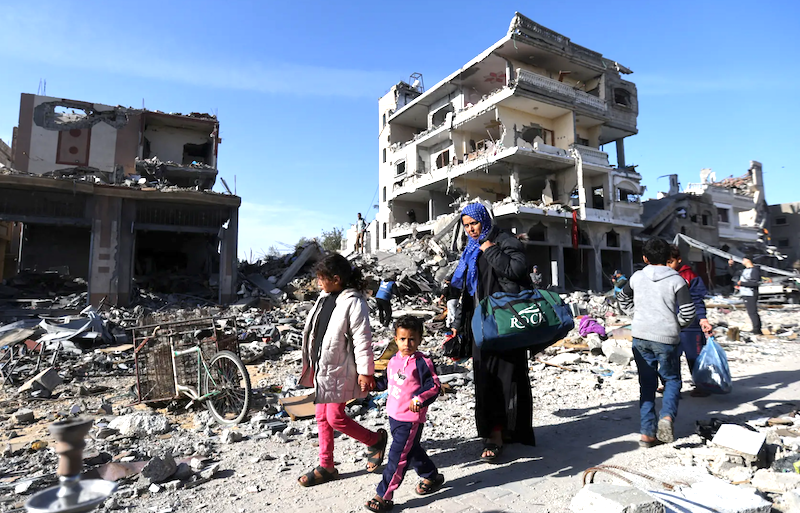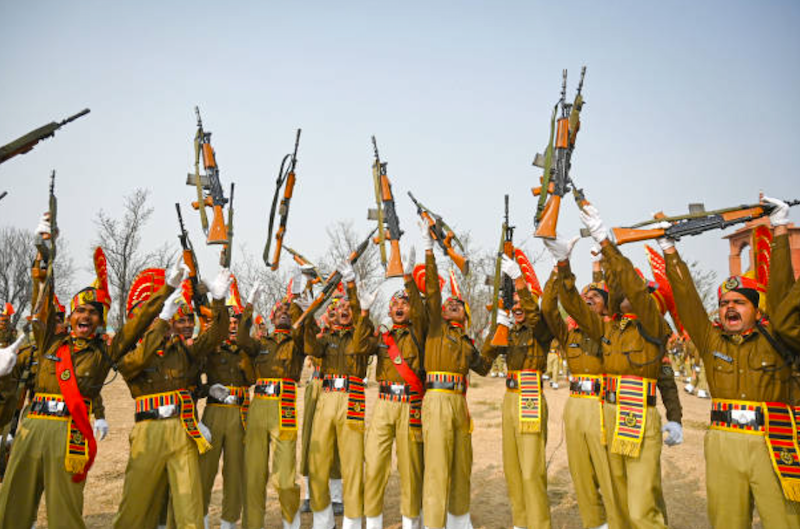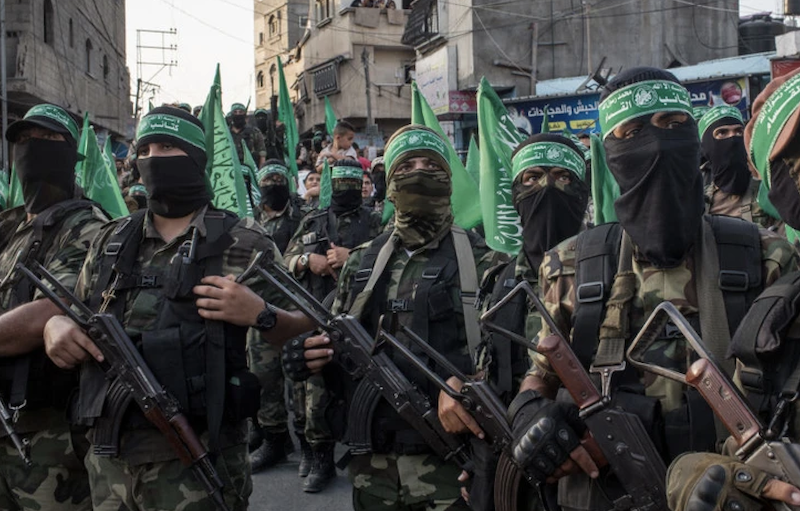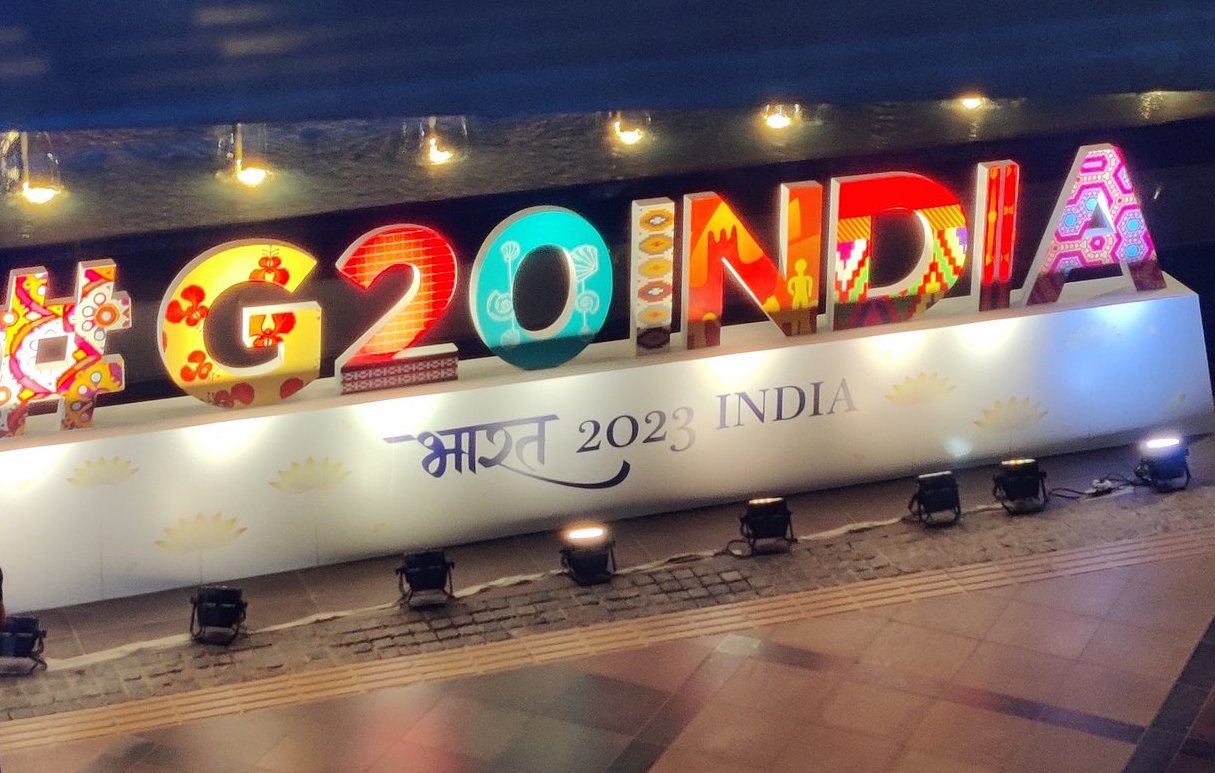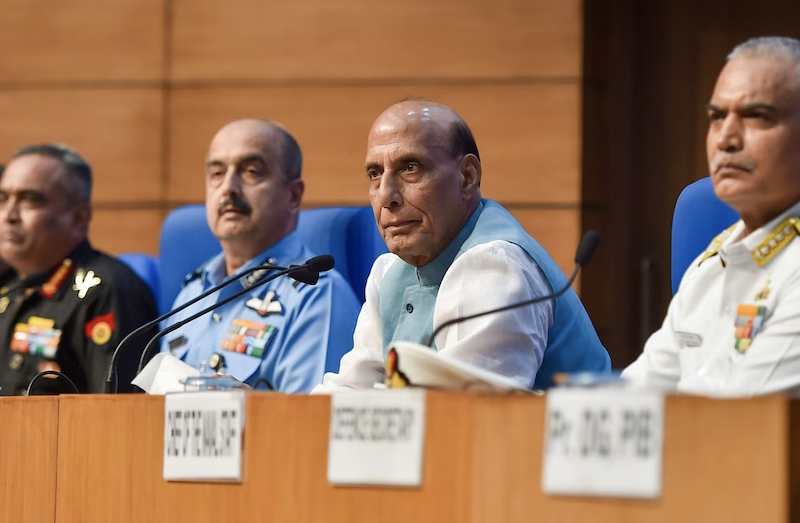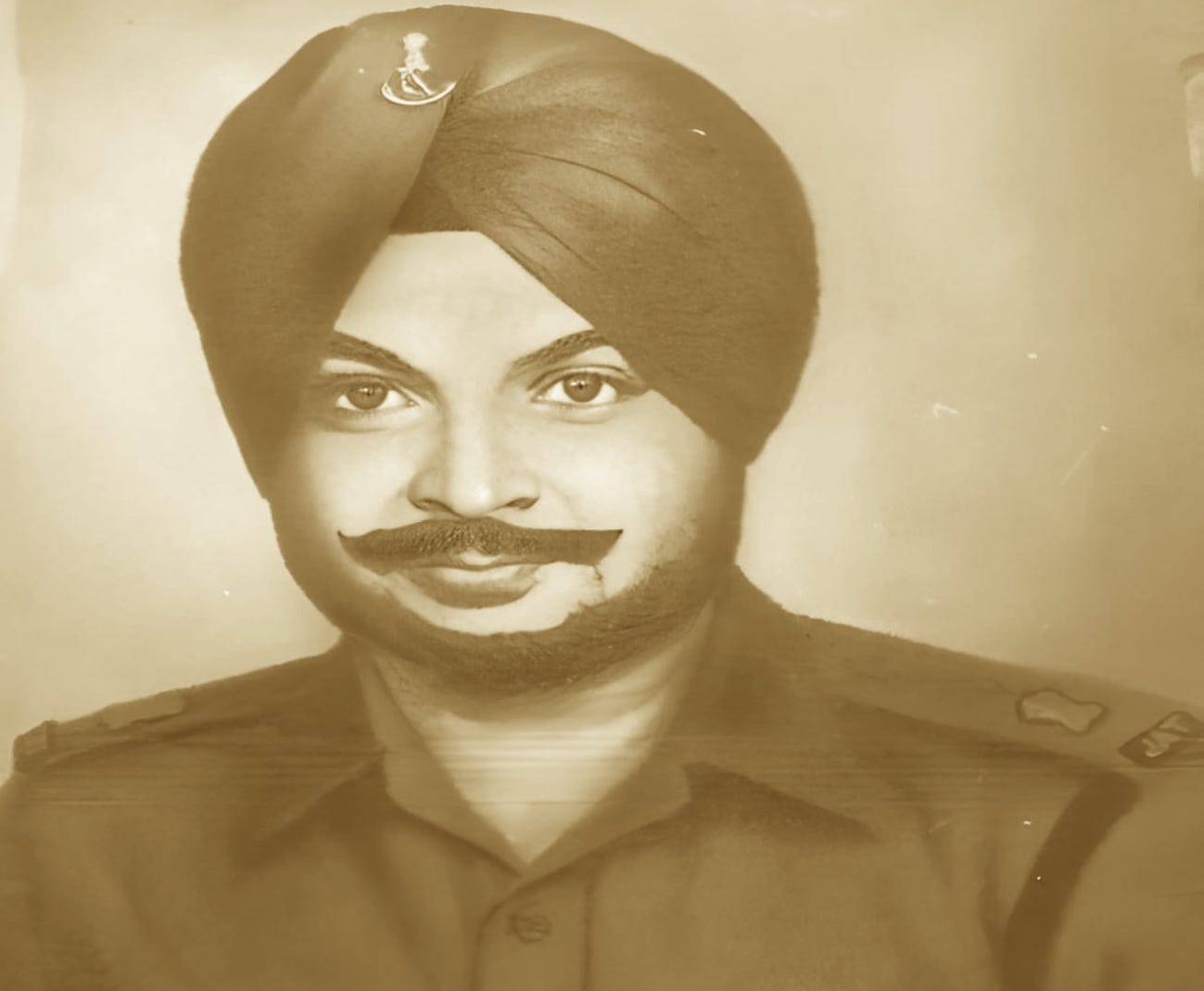 A portrait of Major Ajit Singh, MVC – the hero of 1962 Hot Springs operation. (Photo for India Sentinels collected by Jai Samota via special arrangement)
A portrait of Major Ajit Singh, MVC – the hero of 1962 Hot Springs operation. (Photo for India Sentinels collected by Jai Samota via special arrangement)
“Let Chinese blood flow at the Hot Springs. We are well prepared, and my men are fully behind me.” ~ Major Ajit Singh, MVC
It all started with the Nehru government’s “Forward Policy”. After some reluctance, in June 1962, the Western Army Command, under Lieutenant General Daulat Singh, passed an order to the Udhampur-based XV Corps (Chinar Corps) to establish an isolated forward post opposite China’s Samzungling post, deep inside the valley. The 114 Brigade gave this responsibility to the 1/8 Gorkha Rifles, who were in control of this sector. Lieutenant Colonel Hari Chand, who was commanding 1/8 Gorkha Rifles, established a platoon-sized post on July 4, 1962, opposite the Chinese post and a supply post (ration party) some miles away from the post to maintain the supply at Galwan post.
The Gorkhas had been strongly holding the posts at Galwan and Hot Spring for three months when the order came that they were going to be relieved by 5 Jat Regiment.
Lieutenant Colonel Bakhtawar Singh led the Jats who had already been inducted into Ladakh in April. The companies started moving to different locations after the induction. The Alpha Company (A Coy), under Major Srikant Sitaram Hasabnis had reached Chushul in June, and in August, they had reached Phobrang. In the first week of September, they were ordered to move to Hot Springs and relieve the Gorkhas.
Read also: Battle of Galwan – A lost story from the 1962 India-China war
The Jats took over the posts at Hot Springs, Nullah junction, and patrol base. In the next week, the Bravo Company (B Coy), under Major Ajit Singh, also started reaching Phobrang. They were supposed to move to Hot Springs to reach Galwan and relieve the Gorkhas, but the helicopter lift was delayed due to heavy snowfall. On the last day of September, the B Coy reached Hot Springs.
Due to the delay in reaching Hot Springs and some sensitive factors, the A Coy was asked to do so instead. The A Coy, instead of the B Coy, was ordered to move to the Galwan complex. As this post was surrounded by the Chinese, the relief operations were carried out by Mi-4 helicopters. The relief was completely done by October 12, and the Chinese didn’t interfere.
The Galwan complex had a total of 60 men.
Until now, B Coy had settled in. Maj Ajit Singh had divided B Coy and a platoon of A Coy into four posts:
Company HQs plus one platoon under Maj Ajit Singh and Subedar Norang Lal at Hot Springs,
One platoon under Subedar Amar Singh at the patrol base,
One weak platoon (which was formerly under A Coy) under Naib Subedar Umed Singh at Duffer,
One platoon under Naib Subedar Kanhiya Ram at Nullah junction.
Read also: ‘We Stared in the Eyes of Death’ – The 1962 operations in Chushul
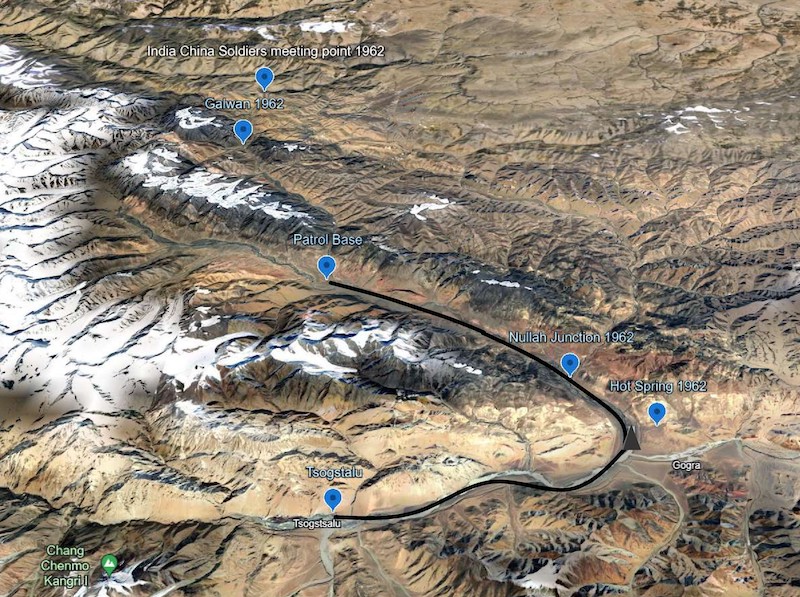 The Hot Springs area. (Google Maps)
The Hot Springs area. (Google Maps)
The Patrol Base
The patrol base, a post at more than 17,000 feet, was held by a weak platoon (26 men) under Sub Amar Singh. The Patrol Base Observation Post (OP) was a little forward from the main post under Havildar Dhan Singh. On October 20, no enemy activity was observed in the vicinity of the post or the next, though some firing was heard from the direction of the Galwan post, as the patrol base was the nearest post to Galwan.
The post commander, Sub Amar Singh, was ordered on October 21 to reorganize his defences and hold it with only 16 men (one section plus). This party included one nursing assistant and one signaller. The other two light machine guns of the platoon and two 2-inch mortars were to be sent back. These, consisting of 15 other ranks and the regiment, were to fall back under Nb Sub Umed Singh to Duffer post, where they reached the same evening and retreated further, along with men of the post who had also been ordered to withdraw.
The enemy commenced shelling the patrol-base observation post (OP) at about 11.30pm on October 22. The OP, a little farther forward, was manned by nine men. Since the shelling was not heavy, Sub Amar Singh wanted to go personally and control the situation. Having obtained permission, the junior commissioned officer (JCO) went forward. He was, however, told not to indulge in fighting but to withdraw if faced with a better equipped and prepared enemy. By then, the intensity of the shelling had increased. Communication with the OP was severed a little later. The enemy surrounded the post and attacked. Enemy automatics were dominating the fight.
Ultimately, the OP was outnumbered by a large Chinese force. Sub Amar Singh, without caring for his personal safety, kept on rallying, and inspiring his men to fight until the end. His fellow men had heard him saying: “We’ve come here to fight the Chinese. Remember, no matter what, we are not leaving this sacred ground.”
He and his men kept inflicting casualties on the enemy when an enemy shell landed on his post, claiming the lives of three men, including their gallant JCO. Others, who were mostly wounded, became prisoners.
Hav Dhan Singh, who was left behind on the main post, witnessed the enemy gathering in front of his position and reported it to the company headquarters on the wireless. The enemy started shelling the post followed by an infantry assault. Later, the enemy later switched on the shelling to the patrol base’s main post and attacked it soon after, according to the last reports from Hav Dhan Singh on the wireless.
They also continued to fight. Dhan Singh kept moving from trench to trench, inspiring his men to keep on fighting. And they put up a gallant fight until they were outnumbered. Hav Dhan Singh and one other rank were killed, and another was wounded by a shell burst. Six others were taken prisoners.
Signalman Unninathan reported the happenings to the company commander, and he was detailed to escort the casualties. Sepoy Zamin Singh and Sepoy Balbir Singh, along with nursing assistant Gopiram and three other ranks of B Coy, were also present. The troops were withdrawn from the Nullah junction due to enemy activity. The enemy had occupied a post between Duffer and Hot Springs and were shelling the area. Unninathan, along with one man, kept searching for a new route to evacuate casualties, while Gopiram kept treating the casualties with whatever he had.
Read also: ‘Gateway to Hell’ – The 1962 operation in Daulat Beg Oldie
The Nullah Junction
After overrunning the patrol base, the Chinese tried to outflank Nullah Junction Post to cut off Hot Springs from the rear. This B Coy post was commanded by Nb Sub Kanhiya Ram with 14 men. The Nullah junction OP, which was at an altitude of more than 16,000 feet, was under Naik Maya Ram, who had six men with him.
On October 23, at 6pm, the enemy started gathering in front of the post, and the Nullah junction post and Duffer were ordered to withdraw. Nk Maya Ram and his men were left to cover the withdrawal. At around 9.30pm, the enemy closed in on the post, which was seen by Sepoy Neki Ram, who was the night sentry. At 10.20pm, a barrage of shelling destroyed the defences, followed by an infantry assault at 11.15pm.
When the enemy came into the firing range, Nk Maya Ram ordered his men to open fire with all weapons, including personal rifles and light machine guns (LMGs). The enemy’s medium machine gun (MMG) started firing at the LMG trench, and replying to enemy fire, Sep Neki Ram fired towards the MMG and dominated the scene. After 25 minutes of intense firefighting, his LMG was put out of action.
After suffering several casualties, the enemy withdrew. This withdrawal was followed by heavy pounding by the artillery and mortars; this time, the shelling was so heavy that it killed two men and wounded every other man. Sep Neki Ram, who was handling the LMG, was directly hit by a shell and MMG burst. The shell did not take his life, but it claimed his limbs. Nonetheless, Sep Neki Ram grabbed his comrade’s rifle and continued to fire at the enemy. He continued to lob grenades at the enemy. Now the enemy, which was larger than two platoons, attacked from two directions.
Sepoy Khema Ram, who was injured and profusely bleeding, kept firing, and when he ran out of ammunition, he lobbed grenades to disperse the enemy. His section commander, Nk Maya Ram, was also wounded during the assault, and he ordered the remaining men to withdraw. Sep Neki Ram refused to be evacuated, and Sep Khema Ram jumped out of his trench and rolled down 40 feet, breaking his ankle, but he did not get disheartened. He continuously crawled towards the abandoned Nullah junction. The enemy captured the Nullah junction OP, and Sep Neki Ram was taken as a POW.
About 200 yards from the post, Sep Khema Ram was met by his section commander, who tied a bandage to Khema Ram’s injured leg. Khema Ram refused to be helped and asked him to save his life.
Sep Khema Ram crawled for more than a mile and had already lost too much blood. He hid himself behind a boulder and stayed at the same place for 36 hours in the icy cold temperatures of Ladakh without food, water or cover over his head. His section commander had better luck; he reached the company headquarters, followed by one other man. He informed the company HQ about Sep Khema Ram’s situation.
Read also: ‘Honour, Enfield, and Panama’ – The story of Lt Yog Raj Palta
The Brave JCO
When the two injured soldiers who had made their way to Hot Springs told Sub Norang Lal about Sep Khema Ram, the company’s senior JCO volunteered to take out a patrol to find the injured soldier. On October 24, he and Nk Maya Ram arrived at the Nullah junction and discovered that the post was unoccupied by the enemy. Wasting no time, Sub Norang Lal informed his company commander and requested authorization to reoccupy the post.
Maj Ajit Singh asked the brigade for permission, but he received orders to withdraw because of the overwhelming build-up opposite Hot Springs. The brigade ordered the B Coy to withdraw to Tsogtsalu, further to the rear. He was extremely disturbed.
Later, the brigade major, of 114 Brigade, Major Jagjit Singh, said: “He (Maj Ajit Singh) kept on insisting that you please give us a chance to avenge the massacre of our brothers elsewhere. Let Chinese blood flow at the Hot Springs. We are well prepared, and my men are fully behind me.”
Eventually, Maj Ajit Singh was permitted to execute his plans, and Sub Norang Lal occupied the post at Nullah junction. Leaving his second in command at the post, the JCO went further forward, combing the area with two other men, looking for Sep Khema Ram. After an intensive search, he was found lying unconscious in a frozen nala. The wounded soldier was promptly evacuated by the JCO.
Signalman Unninathan, who was unable to find a route, remained with the wounded and men in a secure area until Sub Norang Lal evacuated them on October 24. Together with four other ranks, Sub Norang Lal remained behind to continue occupying the Nullah junction.
Sep Khema Ram was able to recover but he had to have his right hand and leg amputated to save his life. Later in the day, the other JCO and a few additional soldiers fortified the Nullah junction, and Sub Norang Lal returned to Hot Springs.
Read also: ‘Fire Till Eternity’ – The story of Maj Shyamal Dev Goswami
The Withdrawal
Maj Ajit Singh was instructed to retreat to Phobrang via Tsogtsalu and on to Lukung and join the battalion HQ without C Coy because of the ongoing enemy build-up opposite the front and reports of infiltration in the vicinity of Marsimik-la. As the commander in charge, the officer made the choice to withdraw as planned with 80 men along Chang Chenmo valley. One platoon and 11 casualties were left behind, and Sub Norang Lal was left in command of the rear party and to cover the company’s withdrawal. When his task achieved completion on the night of October 25–26, he was supposed to head back to Tsogtsalu.
Once more, this gallant JCO completed his assigned task despite extremely challenging circumstances. On October 27, eleven casualties from the A and B Companies were evacuated by helicopter out of Hot Springs. On October 28, the Chinese advanced with two platoons from the east and perhaps one platoon from the south.
The enemy was more than three times as strong at the post, yet the JCO, Sub Norang Lal, held the post outfoxing the enemy. From a distance, the enemy opened fire with an LMG on his position. The JCO controlled his fire so as not to reveal his strength, and the enemy retreated, believing the post had been abandoned.
The following day, an enemy aircraft passed over his position. Despite these odds, the JCO did not give up and continued to put up a brave front, leading several patrols. Meanwhile, Maj Ajit Singh led his column along the Chang Chenmo valley, to Ororotse-tso, towards Phobrang. He left on the afternoon of October 25, with only about six days’ rations on the men. By the time the troops arrived at Ororotse on November 1, all supplies had been depleted.
The following day, on November 1, Maj Ajit Singh made the decision to head out towards Phobrang with a smaller group of soldiers (two medical officers, one JCO, and 38 other ranks). He arrived at battalion headquarters in Lukung two days later, on November 3. One JCO and 25 other ranks had to be admitted to the hospital right away because they suffered chilblains and frostbite. Two days later, Maj Ajit Singh was also admitted to hospital. The following day, a rescue team led by Second Lieutenant Megh Pal Singh, together with one JCO and four other ranks, was sent out with enough food for six days on ponies and yaks.
On November 9, all the troops were found and reunited with battalion headquarters.
The Maha Vir Chakra, the highest honour won by the unit during the operation, was given to Maj Ajit Singh. The Vishisht Seva Medal Class III was given to Sub Norang Lal in recognition of his outstanding bravery and being a source of great inspiration to his comrades. He not only occupied the position, but he also helped his fellow soldiers by saving their lives. B Coy engaged the superior adversary head on and fought bravely.
[Note: A different version of this story on the Alpha Company of 5 Jat during the 1962 war by the same author was previously published here, on India Sentinels.]
Disclaimer: The views expressed in this article are author’s own and the authenticity of the events mentioned are his own findings. His views don’t necessarily reflect the views of India Sentinels and India Sentinels can’t vouch for the authenticity of the events mentioned .If any reader has any dispute with the veracity of certain facts and/or have additional information, kindly write to us at [email protected].
Follow us on social media for quick updates, new photos, videos, and more
X (formerly Twitter): https://x.com/indiasentinels
Facebook: https://facebook.com/indiasentinels
Instagram: https://instagram.com/indiasentinels
YouTube: https://youtube.com/indiasentinels
© India Sentinels 2024-25

